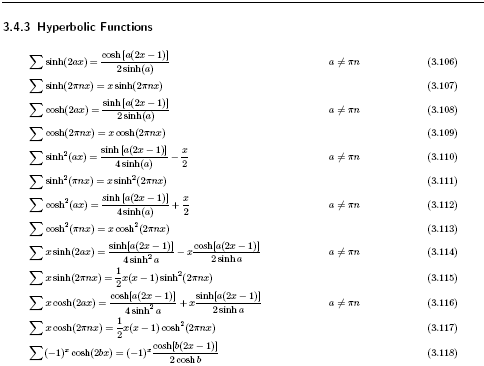
Original image by openDemocracy.
The document below contains tables and formulas useful for working with functional equations, especially difference equations, and to a lesser extent, quotient equations (where differences are replaced by quotients).
The reference contains tables for forward differences, (indefinite) sums, quotients, and products. There is also a table of z-transforms, binomial transfroms, formulas for converting certain kinds of functional equations to difference equations and some discrete Taylor series. There are more than 500 formulas in its 65 pages.
This is a work in progress, so be sure to read the preface (which highlights some of the issues with this document). If you find any errors, please comment below.


Changes
Version 1.1
- Added Exponential Sums to differences and sums.
- Additions to the z-transform table.
- Added Binomial Transform pairs.
Version 1.2
- Expanded the section on the discrete power functions.
- Expanded the section that explain the sue of constants in the table.
- Added forms involving the following expressions to the sum (x + h) tables:
- ax + b
- x^2 + a^2
- Updated all the graphs, and added some new ones.
- Reorganized slightly, and fixed some typos.
- Added a few examples, explanations, and additional notations in the sum (x + h) tables.
Version 1.3
- Made several corrections.
- Added the chain and substitution rules for arithmetic differences.
- Added table of functions for reference.
- Expanded the introduction somewhat.
- Added definition for arithmetic difference analogs.
- Added rules for manipulating arithmetic difference analogs.
- Added several new entries, including several functions whose sums can be expressed as the sum of E(x) = 1/(eix + 1).
- Expressed the G-function (sum of the Gamma function) as a product of known functions, and replaced its notation. The notation G(x) is now used for the Barnes G-function.
Version 1.4
- Made, as always, a few corrections.
- Made some minor additions to many of the tables.
- Added the tangent sum function. There are still many details to sort out for this and related functions (cot, sec, csc, their hyperbolic counterparts, 1/(ex+1), and so on), and hence these sections are still messy. These will be cleaned up as the details become clear.
- Replaced some of the statements on periodic, odd, and even functions with precise versions. The previous ones were only correct up to a periodic function.
- Added the derangement function (expressed in terms of the incomplete gamma function), as well as some related Taylor series.
- Since I included the definitions of analog functions, I discovered that the intuitive notion of analogs did not correspond to the definition. Thus, the analogs of ln x and atan x have been removed / replaced. These might re-appear if the definition of analog functions is suitably adjusted.
- Made many statements on the z-transform more precise.
- Made some notations more consistent with standard notation.
Version 1.5
- Made a small correction for the binomial law for discrete powers.
Download
DiscreteCalculusTables_1_5 (PDF 4.6 MB).
I believe your formulas are right. I appreciate you for the work. Yet it has a deficiency. There are too much of them. There is a summation formula for any analytical function at http://en.wikipedia.org/wiki/User:Ascoldcaves . The proof of the formula is at the site http://www.oddmaths.info/indefinitesum . Don’t bother with the proof. There is in the bottom left of the page a button “Examples”. They are live examples. To calculate a sum you have to input an analytical function at your choice and arbitrary complex boundaries and click. I think it will be funny for you. Before using examples read Instruction.
Please tell me your opinion about it. My e-mail oddmaths@yahoo.com .
Ascold.
Hey Ascold, thanks for your comment. I have in fact seen the sitebefore, but unfortunately could not follow the logic — most surely because of lack in my mathematical background. I have sent you a mail as well. -ht